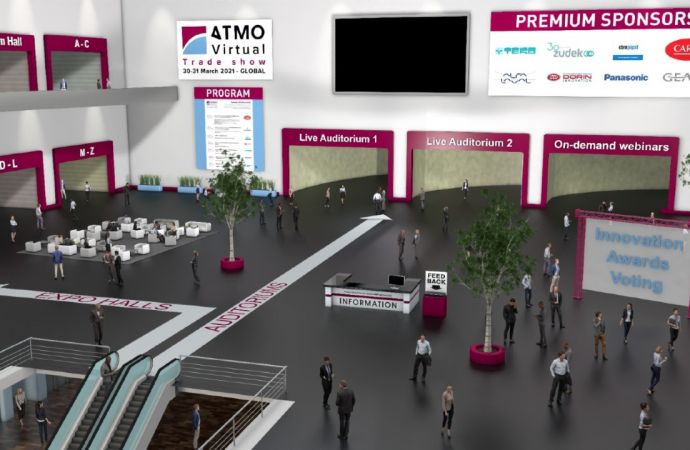In the last part of the Atmosphere 2009 special the recommendations developed and discussed by the participants of the ammonia workshop are presented. The main purpose was to formulate concrete actions to bring existing and new technologies faster to market not only in developed but also in developing countries. Presentations now available.

At the international conference on the natural refrigerants ammonia, CO2 and hydrocarbons more than 150 participants from 30 countries gathered in Brussels on 19-20 October to discuss policy frameworks and finance schemes that could help natural refrigerants penetrating different world markets within a shorter time frame. The dedicated workshop sessions on ammonia showcasing best practice examples all around the world brought also lively discussions about how to deploy ammonia faster.
Recommendations from the ammonia sessions
Participants to the dedicated workshops on ammonia technology, drew the following conclusions:
The clear aim of Atmosphere 2009 – to start concrete discussions about how to use existing policy frameworks and funding programmes to promote natural refrigerants as a viable alternative in industrialised and emerging economies – was reached, with discussions during the general policy and finance sessions evolving around the question of how to use Clean Development Mechanisms, World Bank funding programmes, UN educational programmes, e-learning modules, and national incentive schemes to drive change and move towards a faster replacement of F-gases. From these discussions, another important recommendation emerged:
Recommendations from the ammonia sessions
Participants to the dedicated workshops on ammonia technology, drew the following conclusions:
- Further enhancement of technologies: Participants largely agreed that new technologies as well as the improvement of existing technology would have a major influence on the market penetration of ammonia. It was mentioned that already existing systems, such as low charge systems, should be further enhanced and new technologies, including oil-free compressors that are not yet prospected, should be developed and brought to market. Another technology, namely hermetic scroll compressors that are already in the starting blocks but not on the market yet was particularly mentioned as a big potential for the ammonia market.
- Standard regulations: The workshop participants called for standardisation of regulation within Europe as well as within the different states of the USA. As the final objective a universal legislation was envisaged to simplify the process for companies’ operation in different continents and in addition to facilitating the adoption in developing countries, too. Inappropriate safety standards misapplied to different applications would need to be reviewed, as well as standards and legislation revised on an annual basis to allow new technologies and developments to penetrate the market faster.
- Sustainable regulations: Another recommendation from the Atmosphere participants regards more the actual content of the regulations. Not only that they called for a simpler framework but more importantly the integration of sustainability in this framework was requested. The concept of Life Cycle Analysis was given as one example to realise the difficult tasks to include durability and sustainability considerations.
- Training and Education: The last main recommendation all participants agreed on was the support and improvement of training and education. Especially in the developing countries a much bigger effort from the policy as well as from the industry side is needed to ensure the exportation of technical knowledge and safety training. However, to guarantee an effective knowledge transfer from countries with already existing applications the methods have to be adapted to fit the needs of emerging economies. Training and education would hence be the door opener for successfully employing ammonia and other natural refrigerants in less experienced industry sectors and world regions. In the regard of training and education it was also mentioned that more thoughts should be put into the design of the systems to provide technology that is more maintenance-friendly and therefore easier to adopt. However, the participants have discussed this recommendation critically. Some saw problems in the practical realisation of this suggestion as system designers and installers might try to keep the systems more difficult than they have to in order to “safe their business”.
The clear aim of Atmosphere 2009 – to start concrete discussions about how to use existing policy frameworks and funding programmes to promote natural refrigerants as a viable alternative in industrialised and emerging economies – was reached, with discussions during the general policy and finance sessions evolving around the question of how to use Clean Development Mechanisms, World Bank funding programmes, UN educational programmes, e-learning modules, and national incentive schemes to drive change and move towards a faster replacement of F-gases. From these discussions, another important recommendation emerged:
- Join forces: Participants largely agreed that efforts by the industry would need to be better coordinated and communicated to make decision makers and the industry aware of the huge potential of natural refrigerants. Atmosphere 2009 was acknowledged as a potential starting point for more concerted action in that field, based on collecting necessary data to provide best practice examples for developing nations. One tool under which to develop concrete action plans was mentioned by David Kanter, F-Gases Consultant for Greenpeace International, who called for a wider participation of companies worldwide in THENATURALVOICE – a positive statement open to associations, research institutes and corporations, which was presented during an informal group discussion on the Sunday before the official conference start.
MORE INFORMATION
Related stories











